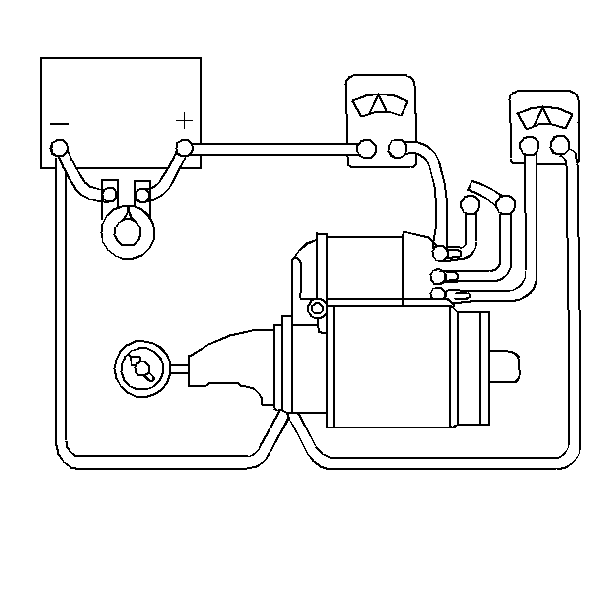Caution: Keep fingers, tools, and any other objects away from the opening in
the drive end housing while making electrical connections. The strong shifting
action of the starter solenoid can cause severe personal injury
or damage to components as the drive pinion moves into the cranking position.
Notice: Do not crank the starter motor for more than 30 seconds at a time. Cool
for at least two minutes after cranking before continuing. Excessive cranking
can cause serious damage to the starter motor as well as erroneous test results.
- Remove the starter motor. Refer to
Starter Motor Replacement
.
- Turn OFF the carbon pile.

- Make connections as shown with the switch open.
- Close the switch.
- Adjust the carbon pile in order to obtain 10 Volts.
- Compare the readings of the current, the RPM, and the voltage.
Refer to
Starter Motor Usage
.
- If the pinion does not shift into the cranking position or the
pinion does not rotate, then turn OFF the switch immediately. Ensure that
the test electrical connections were properly made. If so, then replace the
starter motor.
- If the starter motor energizes and the pinion rotates, then, while
maintaining 10 Volts on the voltmeter, check the current draw on the
ammeter and the pinion speed on the RPM indicator
| - | If the current draw and the pinion speed (RPM) are within the
specifications, then the starter motor is good. |
| - | If the current draw or the pinion speed (RPM) is not within the
specifications, then replace the starter motor. Refer to
Starter Motor Replacement
. |

